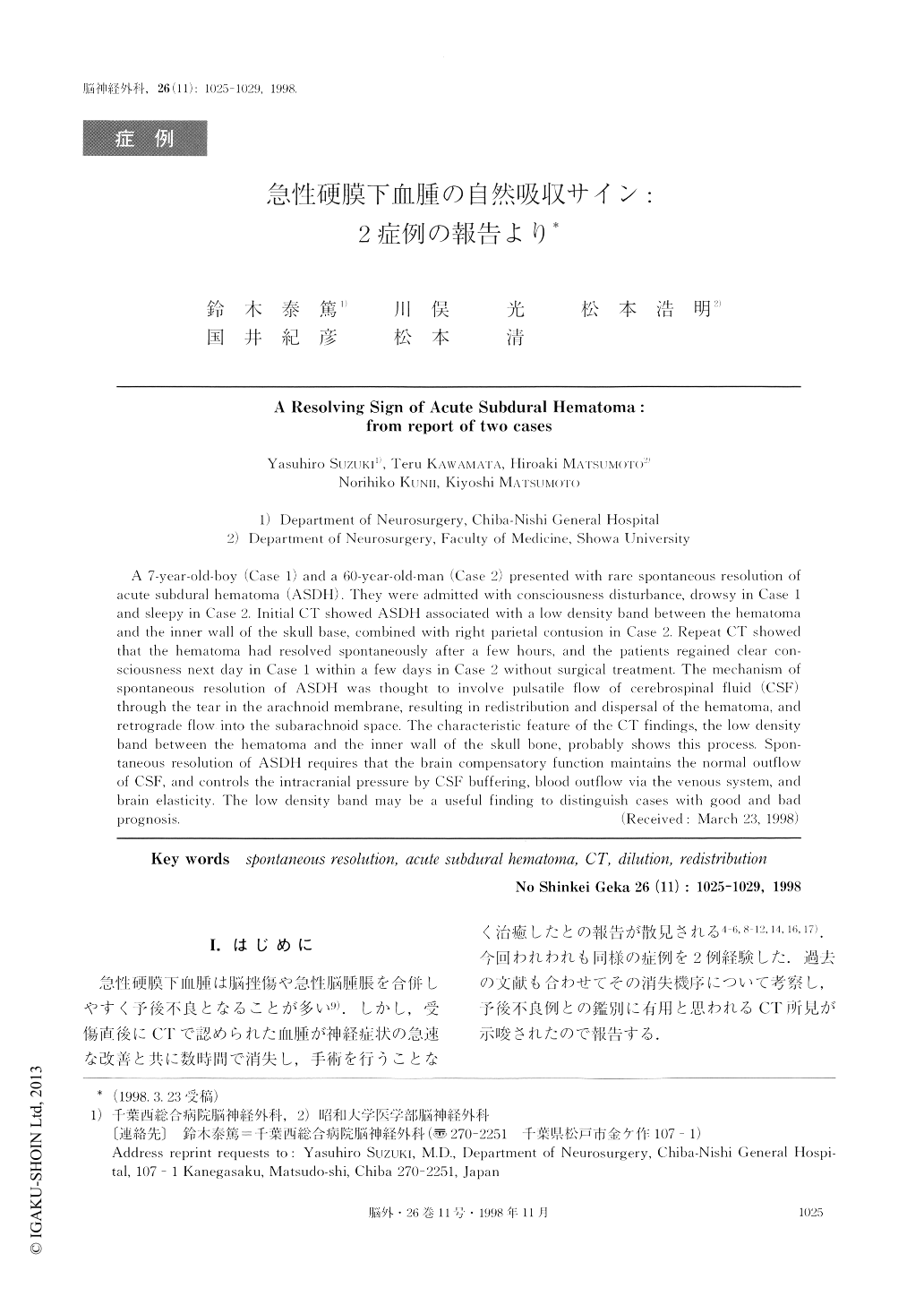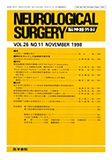Japanese
English
- 有料閲覧
- Abstract 文献概要
- 1ページ目 Look Inside
I.はじめに
急性硬膜下血腫は脳挫傷や急性脳腫脹を合併しやすく予後不良となることが多い9).しかし,受傷直後にCTで認められた血腫が神経症状の急速な改善と共に数時間で消失し,手術を行うことなく治癒したとの報告が散見される4-6,8-12,14,16,17).今回われわれも同様の症例を2例経験した.過去の文献も合わせてその消失機序について考察し,予後不良例との鑑別に有用と思われるCT所見が示唆されたので報告する.
A 7-year-old-boy (Case1) and a 60-year-old-man (Case2) presented with rare spontaneous resolution of acute subdural hematoma (ASDH). They were admitted with consciousness disturbance, drowsy in Case 1 and sleepy in Case 2, Initial CT showed ASDH associated with a low density band between the hematoma and the inner wall of the skull base, combined with right parietal contusion in Case 2. Repeat CT showed that the hematoma had resolved spontaneously after a few hours, and the patients regained clear con-sciousness next day in Case 1 within a few days in Case 2 without surgical treatment. The mechanism of spontaneous resolution of ASDH was thought to involve pulsatile flow of cerebrospinal fluid (CSF)through the tear in the arachnoid membrane, resulting in redistribution and dispersal of the hematoma, and retrograde flow into the subarachnoid space. The characteristic feature of the CT findings, the low density band between the hematoma and the inner wall of the skull bone, probably shows this process. Spon-taneous resolution of ASDH requires that the brain compensatory function maintains the normal outflow of CSF, and controls the intracranial pressure by CSF buffering, blood outflow via the venous system, and brain elasticity. The low density band may be a useful finding to distinguish cases with good and bad prognosis.

Copyright © 1998, Igaku-Shoin Ltd. All rights reserved.


